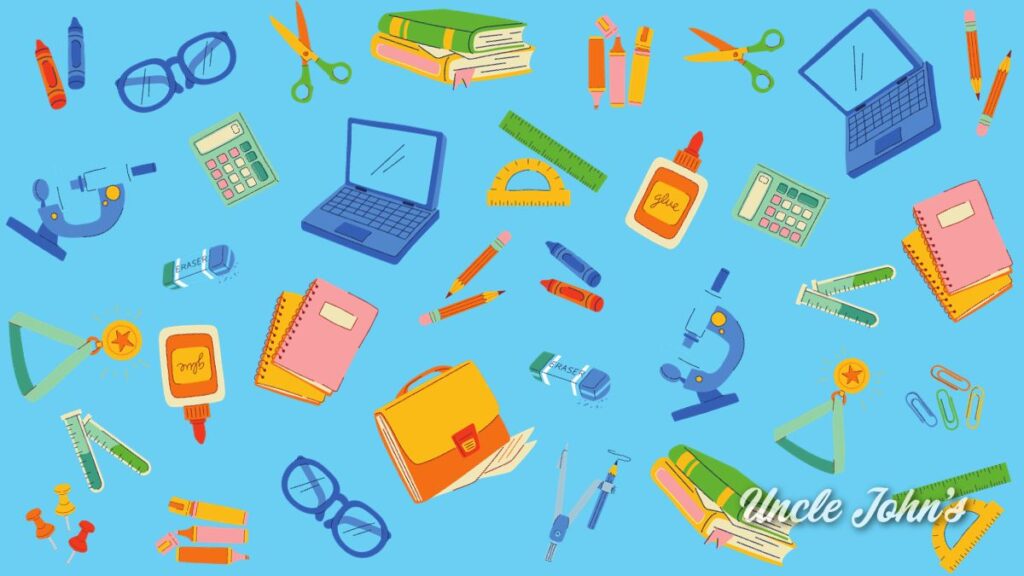Yes, it’s September, but Uncle John isn’t literally going back to school — what could they teach him? That guy knows everything. We exaggerate, but he does know a lot about the origins and history of some of the objects and practices most associated with school.
PINK ERASERS
When John Eberhard Faber moved the Faber-Castell Company from Bavaria to Brooklyn in 1861, he also built the first pencil factory in the United States. Quickly, the company landed a deal with the Woolworths department store chain to manufacture an exclusive line of pencils. The Pearl Pencil each came topped with an erase made from a mixture of rubber and naturally pink-colored pumice, imported Italian volcanic ash. Faber liked the look, feel, and functionality of the erasers so much that he started making big, freestanding ones for error-prone kids.
Discover a plethora of trivia in Uncle John's newest Bathroom Reader!
PENCIL SHARPENER
Students used to have to sharpen their pencils by whittling at the tip with a very sharp knife — a disaster waiting to happen. In 1828, French mathematician Bernard Lassimone patented “the pencil cutter.” Into a small block of wood, Lassimone placed a system of sharp metal files. The pencil was inserted, and as it turned, the files safely did the whittling. In the 1840s, French inventor Therry des Estwaux improved on Lassimone’s design, making the insertion chamber cone-shaped and lined with blades instead of filed, making for a more even pencil shave.
BLACKBOARD ERASER
Teachers once used a damp rag to wipe down the blackboard, but it generated a lot of gunk and dust, and the board took hours to dry. The solution came from Rhode Island school supply store owner John Hammett. In 1860, he realized that dry felt was more effective than a wet cotton rag and designed a lightweight brick wrapped in felt. That’s the first blackboard eraser, and the tool hasn’t changed much in 160 years.
HOMEWORK
That thing kids dread that feels like punishment actually started out that way. In 1905, Italian schoolteacher Robert Nevilis came up with the idea of sending extra, unnecessary study tasks home with his charges that he felt were lazy or had been rude or disobedient. The idea spread through Italy, then western Europe, and by the mid-1940s, “homework” was standard practice in the United States… for all kids, not just the troublemakers.
DOGS EATING HOMEWORK
With the invention of homework came the invention of excuses for having not completed one’s homework. The most famous, and most clichéd: “the dog ate it.” In a 1905 issue of the popular magazine The Cambrian, music writer William ApMadoc told a story about witnessing a minister tell a sermon that was too short, allegedly because his dog had eaten his notes. The anecdote was repeated in prominent speeches for years, and it became permanently, officially affiliated with homework in 1929 in a column in U.K. newspaper The Guardian, in which the writer laments that “it is a long time since I have had the excuse about the dog tearing up the arithmetic homework,” implying that such a concept was a common joke.









